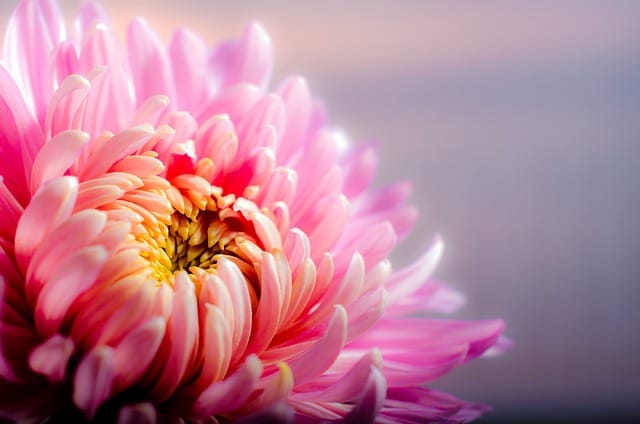How to grow Chrysanthemums
Chrysanthemums are beautiful flowers that come in a variety of colors and shapes

In this article:
Introduction
Chrysanthemums are beautiful flowers that come in a variety of colors and shapes. They are relatively easy to grow and can add a vibrant touch to any garden or landscape. In this article, we will guide you through the process of growing Chrysanthemums, from choosing the right variety to overwintering them successfully.
Choosing the right Chrysanthemum variety
The first step in growing Chrysanthemums is to choose the right variety for your garden. Consider factors such as bloom time, flower form, and height. There are numerous Chrysanthemum varieties to choose from, such as decorative, pompon, and daisy types.
Preparing the soil
Chrysanthemums thrive in well-drained soil that is rich in organic matter. Before planting, it is important to prepare the soil by loosening it with a garden fork or tiller and adding compost or well-rotted manure to improve fertility. Avoid heavy clay soils as they can cause drainage issues.
Planting Chrysanthemums
Chrysanthemums can be planted in either the spring or fall. When planting, make sure to space the plants at least 18-24 inches apart to allow for air circulation and prevent disease. Dig a hole slightly larger than the root ball, place the plant in the hole, and backfill with soil. Water thoroughly after planting.
Watering and fertilizing
Chrysanthemums require regular watering, especially during dry spells. Water deeply once or twice a week, ensuring that the soil is evenly moist but not waterlogged. Fertilize the plants with a balanced, slow-release fertilizer in the spring and again in mid-summer to promote healthy growth and abundant blooms.
Pruning and pinching
To encourage bushy and compact growth, it is important to prune and pinch Chrysanthemums. Pinch back the stems when they reach 6-8 inches in height, leaving only three or four sets of leaves. Regularly remove faded blooms and trim back leggy stems to maintain a neat appearance.
Dealing with pests and diseases
Chrysanthemums are susceptible to certain pests and diseases, such as aphids, mites, and powdery mildew. Monitor your plants regularly and take action at the first sign of a problem. Use organic pest control methods, such as insecticidal soap or neem oil, and remove infected leaves to prevent the spread of disease.
Overwintering Chrysanthemums
In cold climates, Chrysanthemums may need protection during winter. Before the first frost, cut back the stems to 4-6 inches above the ground and apply a thick layer of mulch around the plants to insulate the roots. Alternatively, you can dig up the plants, divide them, and store the root clumps in a cool, dry place until spring.
Propagation techniques
Chrysanthemums can be propagated through division, stem cuttings, or by growing from seeds. Division involves separating the root clumps into smaller sections and replanting them. Stem cuttings can be taken in the summer and rooted in moist soil. Growing from seeds requires sowing them indoors in early spring and transplanting seedlings outdoors when the weather allows.
Tips for a successful Chrysanthemum garden
- Choose a sunny location for your Chrysanthemum garden, as they require at least 6 hours of direct sunlight daily. - Provide support, such as stakes or cages, for taller varieties to prevent them from toppling over. - Deadhead regularly to promote continuous blooming. - Mulch around the plants to conserve soil moisture and suppress weed growth. - Monitor for signs of pests and diseases and take immediate action to prevent damage. - Experiment with different varieties and colors to create an attractive and diverse Chrysanthemum display.
Conclusion
By following these guidelines, you can successfully grow Chrysanthemums in your garden. Remember to choose the right variety, prepare the soil properly, provide adequate water and fertilization, prune and pinch for compact growth, and protect the plants during winter. With proper care and attention, your Chrysanthemum garden will flourish, providing you with beautiful blooms year after year.
